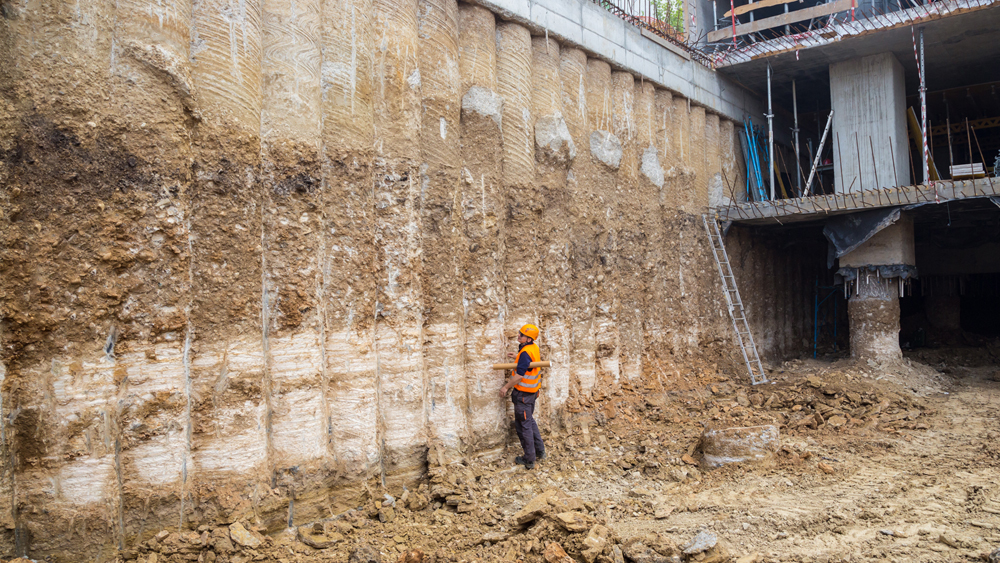Expert Civil Geotechnical Engineering Providers for Complicated Projects
Expert Civil Geotechnical Engineering Providers for Complicated Projects
Blog Article
How Consulting Engineers Enhance Geotechnical Design Projects: Insights Into Their Experience, Approaches, and Collaborative Approaches
Consulting engineers are critical in enhancing geotechnical engineering tasks, applying their specialized knowledge to browse the complexities of subsurface conditions. Their joint strategies foster communication among diverse task stakeholders, ultimately forming the task's trajectory.
Function of Consulting Engineers
The proficiency of seeking advice from engineers in geotechnical design is essential to the successful execution of construction tasks. These professionals play a crucial duty in analyzing dirt and rock residential or commercial properties, which are critical factors influencing design and construction choices. By carrying out extensive site examinations, consulting engineers collect important data that notifies the design process, guaranteeing jobs are built on steady and ideal ground.
Consulting engineers likewise supply very useful insights right into danger administration (geotechnical geologist). They identify possible geotechnical hazards, such as landslides, soil liquefaction, and settlement problems, enabling stakeholders to implement efficient mitigation strategies. Their competence aids in enhancing structure layouts, which can result in significant price financial savings and enhanced safety
Additionally, speaking with engineers function as an important link between project proprietors, designers, and specialists. Their ability to convert complicated geotechnical data right into actionable suggestions promotes collaboration and helps with informed decision-making throughout the job lifecycle. This multidisciplinary approach not only enhances project efficiency but additionally ensures compliance with governing criteria and ideal practices.
Secret Techniques in Geotechnical Engineering

One main method is website examination, which entails carrying out field tests and laboratory analyses to collect data on subsurface conditions. Methods such as Requirement Infiltration Testing (SPT) and Cone Infiltration Screening (CPT) are widely made use of to evaluate soil stratigraphy and strength. In addition, geophysical approaches, consisting of seismic and electric resistivity studies, supply non-invasive means to assess subsurface characteristics.
Another critical method is numerical modeling, which enables engineers to mimic numerous circumstances and predict just how soil-structure interactions will behave under different loading problems. Limited Aspect Analysis (FEA) is an usual approach used in this context.
Moreover, the layout of foundations, keeping frameworks, and earthworks depends heavily on these approaches - geotechnical geologist. By incorporating innovative logical devices with field data, getting in touch with engineers can create customized remedies that resolve certain project obstacles, ultimately adding to the stability and safety and security of building and construction tasks
Relevance of Dirt Analysis
Soil evaluation works as a foundational component in geotechnical engineering, giving vital understandings right into the physical and chemical homes of soil necessary for efficient building and construction preparation. Recognizing soil features is important for determining its load-bearing capability, drain actions, and potential for negotiation or instability. Comprehensive soil investigations, including sampling and laboratory screening, help identify criteria such as soil kind, wetness content, thickness, and shear strength.
These analyses inform the choice of ideal construction strategies and materials, eventually affecting job safety and security and long life. Cohesive soils may call for various foundation designs compared to granular dirts, necessitating tailored engineering services. Dirt evaluation help in identifying contaminants that can position dangers to human wellness or the environment, allowing for the growth of mitigation strategies.
Integrating soil evaluation into the early phases of job growth aids to minimize unpredicted obstacles, guaranteeing that designers can prepare for and address potential concerns prior to they rise. By developing a thorough understanding of the website conditions, speaking with designers can maximize design performance and decrease expenses, thus improving the overall success of geotechnical engineering tasks.
Joint Strategies in Jobs
Effective geotechnical projects typically rest on joint strategies that unite varied knowledge from various disciplines. Efficient cooperation among consulting designers, rock hounds, ecological scientists, and building and construction specialists you can look here is essential for resolving complex challenges and enhancing task end results. By leveraging the special abilities and knowledge of each staff member, jobs can gain from an all natural understanding of the site conditions, regulative needs, and design constraints.
Normal communication and interdisciplinary meetings help with the sharing of understandings and promote a society of Visit Your URL team effort. These collective efforts make it possible for the identification of possible dangers early in the job lifecycle, permitting timely mitigation techniques. Additionally, including feedback from stakeholders, including regional neighborhoods and regulatory agencies, makes certain that all perspectives are thought about, boosting job approval and compliance.
Additionally, the assimilation of sophisticated innovations, such as Geographic Information Solution (GIS) and Structure Information Modeling (BIM), more enhances cooperation. These devices allow for the real-time sharing of data and visualization of geotechnical conditions, promoting educated decision-making. Inevitably, a collaborative method not only enhances job execution however additionally lays the structure for innovative options to complex geotechnical design difficulties.
Influence On Job End Results

Consulting engineers employ innovative approaches such as risk evaluation and predictive modeling, which improve the accuracy of job projections. Their capacity to integrate innovative innovations, like geotechnical instrumentation and information analytics, even more fine-tunes the layout and building procedures. As an outcome, tasks experience boosted performance, reduced costs, and lessened delays.
Moreover, fostering effective communication and collaboration amongst group participants enhances problem-solving abilities. When difficulties emerge, a united front enables swift recognition of options, preventing potential problems. Inevitably, the collective efforts of consulting engineers add to better results, guaranteeing that jobs meet both regulatory criteria and client expectations.
Final Thought

Report this page